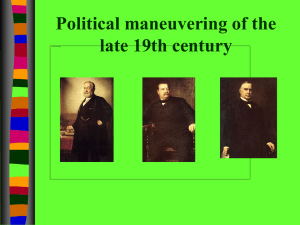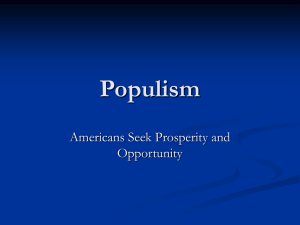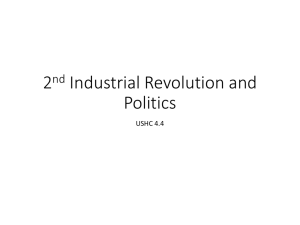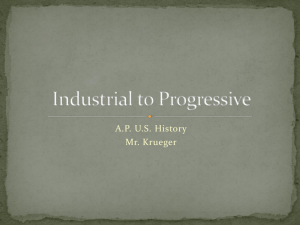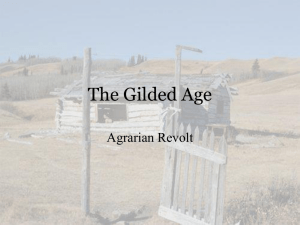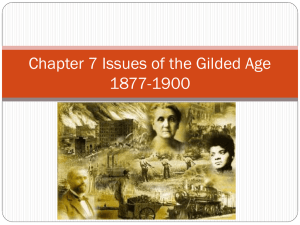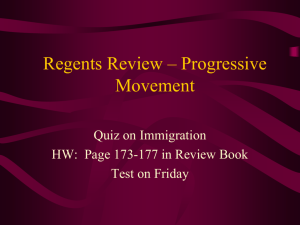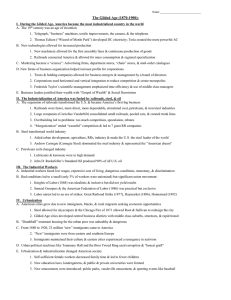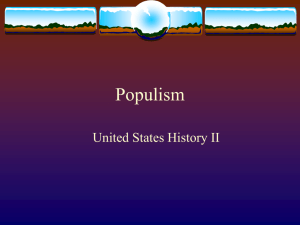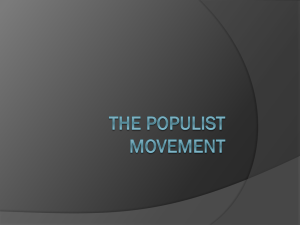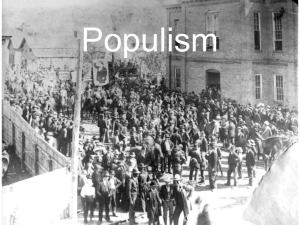The Populist party platform in 1892 stated, “The interests of rural and
advertisement
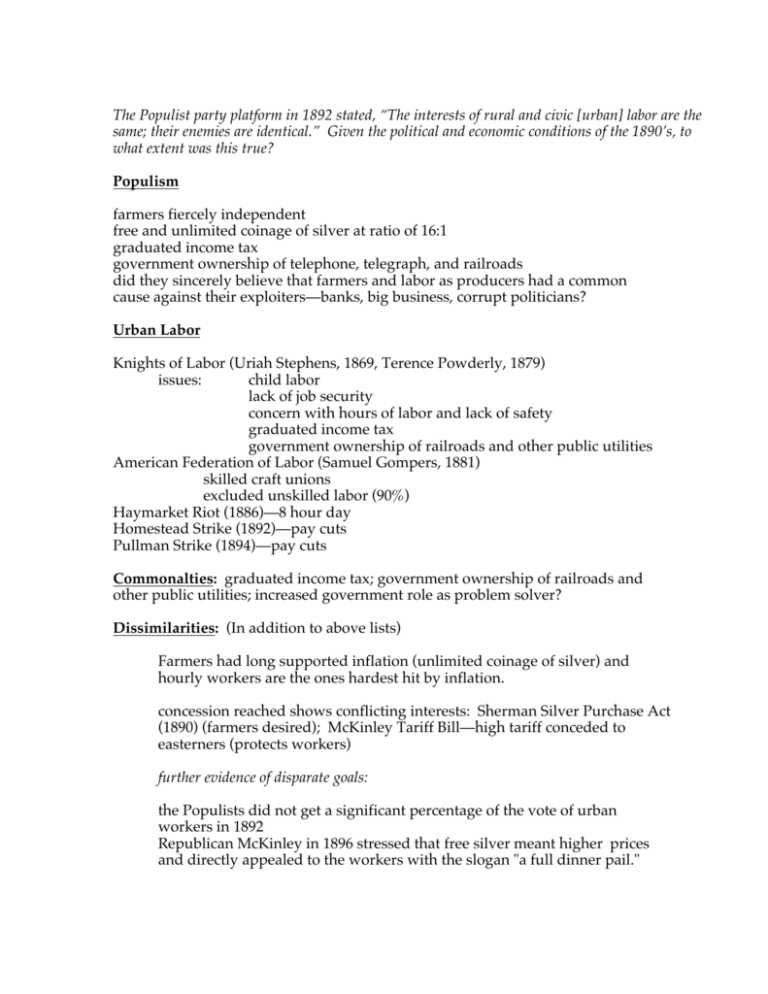
The Populist party platform in 1892 stated, “The interests of rural and civic [urban] labor are the same; their enemies are identical.” Given the political and economic conditions of the 1890’s, to what extent was this true? Populism farmers fiercely independent free and unlimited coinage of silver at ratio of 16:1 graduated income tax government ownership of telephone, telegraph, and railroads did they sincerely believe that farmers and labor as producers had a common cause against their exploiters—banks, big business, corrupt politicians? Urban Labor Knights of Labor (Uriah Stephens, 1869, Terence Powderly, 1879) issues: child labor lack of job security concern with hours of labor and lack of safety graduated income tax government ownership of railroads and other public utilities American Federation of Labor (Samuel Gompers, 1881) skilled craft unions excluded unskilled labor (90%) Haymarket Riot (1886)—8 hour day Homestead Strike (1892)—pay cuts Pullman Strike (1894)—pay cuts Commonalties: graduated income tax; government ownership of railroads and other public utilities; increased government role as problem solver? Dissimilarities: (In addition to above lists) Farmers had long supported inflation (unlimited coinage of silver) and hourly workers are the ones hardest hit by inflation. concession reached shows conflicting interests: Sherman Silver Purchase Act (1890) (farmers desired); McKinley Tariff Bill—high tariff conceded to easterners (protects workers) further evidence of disparate goals: the Populists did not get a significant percentage of the vote of urban workers in 1892 Republican McKinley in 1896 stressed that free silver meant higher prices and directly appealed to the workers with the slogan "a full dinner pail."
